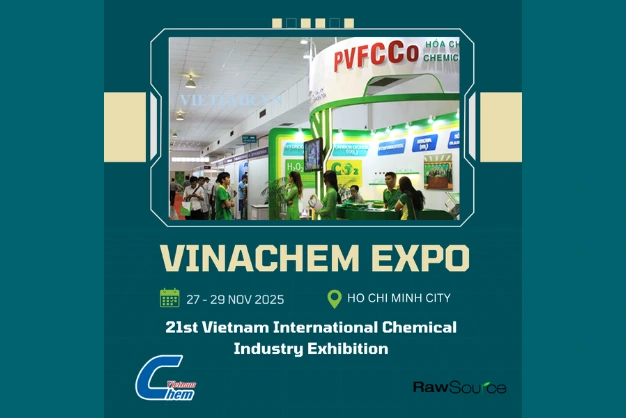TABLE OF CONTENTS
TABLE OF CONTENTS
When it comes to chemicals like hydrofluoric acid (HF) and hydrogen fluoride (H2), understanding the differences is crucial for safe and effective use. Despite their similarities, these substances have unique properties, applications, and hazards. This detailed article will explore the definitions, chemical compositions, properties, states of matter, uses, hazards, handling and safety, and reactivity of hydrofluoric acid and hydrogen fluoride. By the end, you will have a thorough understanding of how these substances differ and how they are applied in various industries.
Definition: Hydrofluoric Acid vs Hydrogen Fluoride
Hydrofluoric Acid (HF): Hydrofluoric acid is an aqueous solution of hydrogen fluoride gas dissolved in water. It is a highly corrosive and toxic solution that can dissolve many materials, including glass and metals.
Hydrogen Fluoride (HF): Hydrogen fluoride is a colorless gas or liquid at room temperature, which forms hydrofluoric acid when dissolved in water. It is used industrially to produce a variety of chemical compounds, including refrigerants and pharmaceuticals.
Chemical Composition: Hydrofluoric Acid vs Hydrogen Fluoride
Hydrofluoric Acid: Chemically, hydrofluoric acid is represented by the formula HF in aqueous solution. It consists of hydrogen ions (H+) and fluoride ions (F-) in water. When HF gas dissolves in water, it ionizes to form these ions, making the solution highly reactive.
Hydrogen Fluoride: Hydrogen fluoride, represented by the formula HF, is a binary compound consisting of hydrogen and fluorine. It exists as a gas or liquid at different temperatures and pressures. In its pure form, HF does not dissociate like it does in aqueous solutions, retaining its molecular structure.
Properties: Hydrofluoric Acid vs Hydrogen Fluoride
Hydrofluoric Acid
Molecular Weight: 20.01 g/mol
Density: Approximately 1.15 g/cm³ for concentrated solutions
Boiling Point: 108°C (in concentrated solution)
Corrosiveness: Extremely corrosive, capable of dissolving glass, metals, and organic materials.
pH: Very low, indicating strong acidity.
Hydrogen Fluoride
Molecular Weight: 20.01 g/mol
Density: 0.98 g/cm³ (liquid form)
Boiling Point: 19.5°C
Corrosiveness: Highly corrosive in gaseous or liquid form.
pH: Not applicable in its pure form as it is not dissolved in water.
State of Matter: Hydrofluoric Acid vs Hydrogen Fluoride
Hydrofluoric Acid: Hydrofluoric acid is typically found as a liquid solution in water. It is commercially available in various concentrations, usually ranging from 30% to 70% HF by weight. In laboratories and industrial settings, it is handled as a liquid.
Hydrogen Fluoride: Hydrogen fluoride exists as a gas at room temperature and pressure but can also be a liquid at lower temperatures. It is often handled as a liquid under pressure or in refrigerated containers. In gaseous form, it is a significant inhalation hazard.
Uses: Hydrofluoric Acid vs. Hydrogen Fluoride
Hydrofluoric Acid
Glass Etching and Frosting: Hydrofluoric acid is widely used in the glass industry for etching and frosting glass surfaces. It reacts with silica in the glass to produce gaseous silicon tetrafluoride and water, leaving a frosted appearance.
Metal Cleaning and Pickling: It is used to clean and pickle metals by removing oxides and other impurities. This process prepares the metal surface for further processing or coating.
Production of Fluorine-Containing Compounds: Hydrofluoric acid is a precursor to many fluorine-containing chemicals, including Teflon and fluorocarbons. It is also used in the production of high-purity silicon for electronics.
Petroleum Industry: Used in the alkylation process to produce high-octane gasoline. The acid acts as a catalyst to combine isobutane and olefin hydrocarbons, improving fuel efficiency.
Hydrogen Fluoride
Production of Refrigerants: Hydrogen fluoride is essential in the production of refrigerants such as hydrofluorocarbons (HFCs). These refrigerants are used in air conditioning and refrigeration systems.
Pharmaceuticals and Agrochemicals: It serves as a building block for various pharmaceuticals and agrochemicals. Fluorinated compounds often have enhanced biological activity and stability.
Petroleum Industry: Used in the alkylation process similar to hydrofluoric acid. HF is preferred in some alkylation units due to its specific catalytic properties.
Electronics Manufacturing: Used in the production of semiconductors and other electronic components. It helps in the etching of silicon wafers and cleaning of electronic components.
Hazards: Hydrofluoric Acid vs Hydrogen Fluoride
Hydrofluoric Acid
Corrosiveness: Can cause severe burns on contact with skin and can penetrate deep into tissues, including bones. The burns are often initially painless due to nerve damage but can cause severe pain and damage later.
Toxicity: Inhalation of vapors can lead to severe respiratory issues, including pulmonary edema. Exposure can be fatal even with small amounts due to its systemic toxicity.
Systemic Toxicity: Absorbed fluoride ions can lead to systemic toxicity, affecting the heart and nervous system. It can cause hypocalcemia, leading to cardiac arrhythmias and death.
Hydrogen Fluoride
Corrosiveness: Extremely corrosive, causing severe skin burns and eye damage. Direct contact can result in deep tissue damage and delayed symptoms.
Toxicity: Inhalation can cause significant respiratory damage, including permanent lung damage. HF gas is readily absorbed through the lungs, posing severe health risks.
Systemic Toxicity: Similar to hydrofluoric acid, exposure can lead to systemic toxicity affecting various organs. It can cause fluoride poisoning, leading to multiple organ failure.
Handling and Safety: Hydrofluoric Acid vs Hydrogen Fluoride
Hydrofluoric Acid
Personal Protective Equipment (PPE): The use of gloves, goggles, and protective clothing is essential when handling hydrofluoric acid. Specially designed HF-resistant gloves and face shields are recommended.
Ventilation: Proper ventilation and fume hoods are necessary to avoid inhaling vapors. Working in a well-ventilated area or using local exhaust ventilation is crucial.
Storage: Must be stored in plastic containers, as it can react with glass and metals. Containers should be clearly labeled and kept in a cool, dry place away from incompatible substances.
Emergency Measures: Immediate washing with water and use of calcium gluconate gel to neutralize the acid on skin contact. Prompt medical attention is critical to manage exposure effectively.
Hydrogen Fluoride
Personal Protective Equipment (PPE): Similar to hydrofluoric acid, PPE is critical. Respiratory protection may be required in areas with high concentrations of HF gas.
Ventilation: Handling should occur in well-ventilated areas to prevent inhalation. Use of fume hoods or gas cabinets is recommended for laboratory settings.
Storage: Often stored in pressurized or refrigerated containers to maintain it in liquid form. Containers should be equipped with safety relief valves to prevent overpressure.
Emergency Measures: Similar emergency measures as for hydrofluoric acid, including immediate washing with water and use of calcium gluconate. Evacuation and use of appropriate neutralizing agents are essential for larger spills.
Reactivity: Hydrofluoric Acid vs Hydrogen Fluoride
Hydrofluoric Acid
Reactivity with Silica: Reacts with silica and silicates, making it useful for glass etching. The reaction produces silicon tetrafluoride gas and water.
Metal Reactivity: Can react with metals to form hydrogen gas and metal fluorides. This reaction can be vigorous and produce hazardous hydrogen gas.
Organic Material Reactivity: Can degrade organic materials and tissues. The acid can penetrate deep into tissues, causing severe burns and systemic toxicity.
Hydrogen Fluoride
Water Reactivity: Highly reactive with water, forming hydrofluoric acid. The reaction is exothermic and releases heat, which can be hazardous.
Material Reactivity: Reacts with a wide range of materials, including glass, metals, and organic compounds. HF can corrode metal containers and glass apparatus.
Industrial Use Reactivity: Utilized in various industrial chemical reactions to produce different compounds. It is a key reagent in the production of fluorinated organic compounds.
Conclusion
Hydrofluoric acid and hydrogen fluoride are closely related yet distinct substances with unique properties, uses, and hazards. Understanding the differences between them is crucial for their safe and effective application in various industries. Hydrofluoric acid is primarily used in aqueous solutions for applications like glass etching and metal cleaning, while hydrogen fluoride is used in its gaseous or liquid form for producing refrigerants and pharmaceuticals. Both substances are highly corrosive and toxic, necessitating stringent safety measures during handling and storage.
Contact Us
Questions or looking for a quote?





